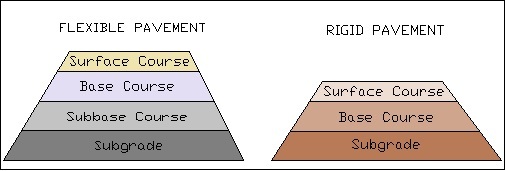
Tunnel is the pathway constructed underground or across the hills for the purpose of transportation or irrigation.
The construction of tunnels depends upon the factors like ground condition, groundwater, length and diameter of the tunnel, transportation, depth of the tunnel, cost of production, and risk management.
The geological investigation decides the mode of excavation, whether it is drilling by machines or blasting or boring. For the survey of tunnel construction, high accuracy level work is preferred. Long tunnel across mountains which are constructed from opposite sides commonly meet with an error of one foot or less. Now laser technology (laser beam) used in tunnel construction as a reference line.
Tunnel Construction Methods
Cut and cover method:
The cut and cover method are used for the construction of a small or shallow tunnel. For that, a trench is excavated and the tunnel is constructed (base and side walls are made and it is roofed by concrete slabs) and cover it up. It is the oldest method of and economic compared to other tunnelling techniques. Pre-cast materials also used in this method. It is adopted for the construction of underpasses and small underground passages in urban areas.
Boring Method:
Tunnel Boring Machine (TBM) is used in the boring method. Commonly adopted for the excavation of long tunnels and boring through different types of soil strata or rock masses. TBM can provide an exact work profile in excavation and reduce causalities in tunnelling. The daily excavation output of TBM cans up to 40m. However, it takes more time in case of hard rock and not economical compared to the drill and blast method.
Drill and Blast Method:
In this method holes are drilled in rocks and explosives are loaded. Blasting is carried out by triggering the detonator which is connected to the explosives. And the rock particles carried out from the tunnel. The blasting should be controlled and make sure that adjacent rock mass didn’t get and faults due to blasting. Otherwise, it will affect the stability of the tunnel.
Sequential Excavation Method:
This method is also known as the New Austrian Tunneling Method (NATM). In this method, the site for the tunnel divided into several segments, and each segment mined using an excavator. After the rock or soil mass removed support is given such as pressurized concrete is applied to the sidewalls and roof (rock bolts, steel mesh, fiber reinforced concrete used as supports) to stabilize the structure. This method is slow but helpful to work in areas where existing structure nearby which can’t be replaced.
Pipe Jacking:
Pipe jacking is used to construct a tunnel under existing structures or roadways or railways or under a live location. Hydraulic jacks are used to push specially made pipes across the ground, and the pipe diameter is limited to 3.2 meters.
Box jacking:
Box jacking is similar to pipe jacking, instated of pipes box-shaped tunnel is pushed across the ground. The span of the box jack is comparatively longer than the pipe jack. Sometimes this method is used in underground railway projects.
Shaft Method in Tunnel construction:
When a tunnel is constructed deep from the ground surface shaft is built-up to the depth of the tunnel, which is a permanent structure with concrete walls. Shafts are provided with both inlet and outlet. Intermediate shafts are also given if the tunnel is long. It is used as temporary access to tunnel during construction later used as ventilation to the tunnel and emergency exits.
Concrete Lining of Tunnels
Tunnels that are used for irrigation purposes, the concrete lining is important to prevent the seepage of water. Tunnels in transportation purpose the concrete lining is done to give support to the rock or soil mass. The reinforced concrete lining is preferred for better support and withstand extreme pressure. Steel bars are bent into required semi-circle shape and assembled in tunnels and high-pressure concrete is applied. Sometimes fibre reinforced concrete also used. The concrete lining is important for better durability and wellbeing of the tunnel.
Ventilation of Tunnels
Ventilation is very important in tunnel construction in order to eliminate smokes from vehicles and provide better air circulation inside the tunnel. The ventilation system is also important during tunnel construction, especially in drilling and blasting methods. The main different types of ventilation systems are Transverse, Semi-Transverse, Longitudinal ventilation systems.
Lighting and Drainage system in Tunnels
Suitable lighting systems should be given in tunnels for easy functionality. Different types of lightings are Interior lighting, Entrance lighting, Emergency lighting, Lighting outside the tunnel entrance. Drainage should be given for the water entering the tunnel.
In the Drainage system, it normally consists of one central drainage and two drainages near to the adjacent sidewalls. The water from surrounding earth mass or seepage through side walls collects drainages near sidewalls and connects it to the central drainage. Water in roadways also collects the central drainage.
Watch: How does a tunnel boring machine works?
Also Read:

